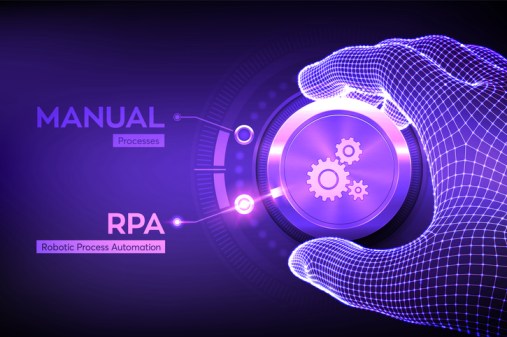USPTO business units begin picking their automations

Business units have started identifying processes they want to automate within the U.S. Patent and Trademark Office, now that its CIO is managing the infrastructure and licensing.
The Robotic Process Automation Governance Team within the Office of the CIO handles configuration management and cybersecurity vetting to standardize the credentialing of bots, while business analysts pick the automations.
Analysts need only fill out an RPA intake form, the first step of the governance process, which asks nine questions before calculating the necessary bot’s complexity and expected time savings.
“We’ve reached a point with our maturity where we’re really encouraging different business units to come to the table with their own ideas for automation,” said Jacob Feldman, program analyst at USPTO, during an ACT-IAC event Wednesday. “This is implementing a federated model of development.”
Initially, USPTO attempted to automate whatever project was proposed, often using bots with if-then scenario logic. But the agency has since learned that some RPA candidates are better than others, and bots reliant on yes-no logic or linear decision-making can be implemented faster, Feldman said.
USPTO built its intake form with Microsoft Power Apps by combining a bot complexity assessment from UiPath, which also supplies the agency with RPA licenses, with a different method from the federal RPA Community of Practice. The form helps select better RPA candidates and has already been shared with the National Institute of Standards and Technology and the Department of Commerce more broadly, Feldman said.
Rather than allow standalone bot licenses, USPTO automations must be done through orchestrator software. The orchestrator has different tenancies for each business unit so patent bots are classified in the patent tenancy.
Bots are developed in a formal qualification testing environment. This prevents rogue bots by thoroughly vetting them before deploying them to a quality assurance or production environment. Governance was set up this way after a mishap that required data cleanup, Feldman said.
The RPA Governance Team doesn’t permit unattended bots yet, as it hasn’t yet addressed the USPTO cyber team’s concerns. But solutions like SailPoint and CyberArk are being considered for giving bots active accounts in the agency directory. Cyber experts within each business unit will determine what’s best for the systems they secure, Feldman said.
USPTO’s Office of the CIO initially kept bot development in-house, but now business units are more actively addressing their needs. The Office of the Chief Financial Officer is using a mix of government and contract personnel to develop bots, while the trademarks business unit is currently acquiring contract support, Feldman said.
The trademarks unit is currently looking to automate suspension checks, where the trademark process is halted to determine if it conflicts with others. Trademark attorneys and their legal support staff assess thousands of trademarks in this way daily.
“This is something a bot can do,” Feldman said. “It can fly through and take a look at any type of associations and then make a determination about whether to re-suspend or remove from suspension.”
The business unit is also looking into one intelligent automation where a bot would scan trademarks and identify words in the dictionary. Then it would attempt to recognize more nuanced trademark names, like “Nice2CU,” and attempt to match those to dictionary words, despite the strange spelling.






